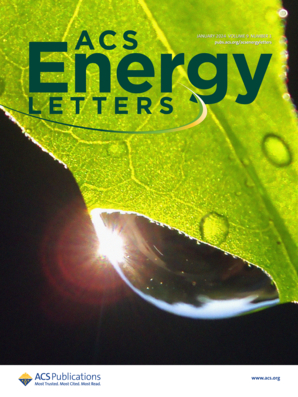Strongly and Weakly Solvating Solvents Co-Coordinated Electrolyte for Stable Lithium Metal Batteries
IF 18.2
1区 材料科学
Q1 CHEMISTRY, PHYSICAL
引用次数: 0
Abstract
Anion-reinforced and weakly solvating electrolytes aim to optimize the composition of the primary solvation sheath by increasing anion participation, thus promoting the formation of a low-resistance solid electrolyte interphase or reducing the desolvation energy barrier of lithium ions (Li+). However, high salt concentrations or weakly solvating solvents can inhibit the dissociation of Li salts, resulting in impaired ionic conductivity. Here, we propose an anion-reinforced electrolyte featuring the co-coordination of strongly and weakly solvating solvents, where the weakly solvating solvent promotes anion participation in the solvation structure while the strongly solvating solvent enhances the dissociation of Li salts, thereby improving the ionic conductivity of the electrolyte. Notably, the competitive coordination between the two solvents results in a looser solvation structure, which reduces the desolvation energy of Li+. Ultimately, a Li metal battery with cycling stability, fast charging, and low-temperature tolerance is achieved. This study provides new insights into electrolyte design for Li metal batteries.

稳定锂金属电池的强溶剂和弱溶剂配位电解质
阴离子增强和弱溶剂化电解质旨在通过增加阴离子的参与来优化初级溶剂化鞘的组成,从而促进低电阻固体电解质界面的形成或降低锂离子(Li+)的脱溶能垒。然而,高盐浓度或弱溶剂化溶剂会抑制锂盐的解离,导致离子电导率受损。本文提出了一种强溶剂和弱溶剂共配的阴离子增强电解质,弱溶剂促进阴离子参与溶剂化结构,强溶剂促进Li盐解离,从而提高电解质的离子电导率。值得注意的是,两种溶剂之间的竞争配位导致了更松散的溶剂化结构,降低了Li+的脱溶能。最终,获得了循环稳定、快速充电和耐低温的锂金属电池。该研究为锂金属电池的电解液设计提供了新的思路。
本文章由计算机程序翻译,如有差异,请以英文原文为准。
求助全文
约1分钟内获得全文
求助全文
来源期刊

ACS Energy Letters
Energy-Renewable Energy, Sustainability and the Environment
CiteScore
31.20
自引率
5.00%
发文量
469
审稿时长
1 months
期刊介绍:
ACS Energy Letters is a monthly journal that publishes papers reporting new scientific advances in energy research. The journal focuses on topics that are of interest to scientists working in the fundamental and applied sciences. Rapid publication is a central criterion for acceptance, and the journal is known for its quick publication times, with an average of 4-6 weeks from submission to web publication in As Soon As Publishable format.
ACS Energy Letters is ranked as the number one journal in the Web of Science Electrochemistry category. It also ranks within the top 10 journals for Physical Chemistry, Energy & Fuels, and Nanoscience & Nanotechnology.
The journal offers several types of articles, including Letters, Energy Express, Perspectives, Reviews, Editorials, Viewpoints and Energy Focus. Additionally, authors have the option to submit videos that summarize or support the information presented in a Perspective or Review article, which can be highlighted on the journal's website. ACS Energy Letters is abstracted and indexed in Chemical Abstracts Service/SciFinder, EBSCO-summon, PubMed, Web of Science, Scopus and Portico.
 求助内容:
求助内容: 应助结果提醒方式:
应助结果提醒方式:


